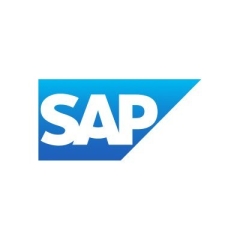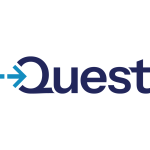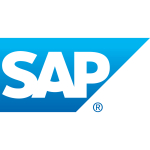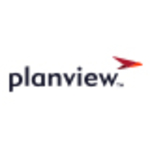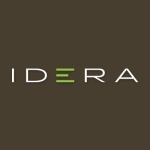What is our primary use case?
We use the solution for:
- Application Portfolio Management
- Portfolio Rationalization
- Democratizing the EA decisions rolled up to CIO/CxO Dashboards
- Model the current state architecture and prepare for the target state architecture
- Business architecture-related activities like business capability model, and landscape views for change management/transformation/tech refresh.
It helps to map the EA components with project/program management data, costs, and where to invest next (risks and opportunities) based on the TIME framework (tolerate, invest, migrate, eliminate).Now May 2025 : TIME,6R etc are part of application factsheet sections itself
How has it helped my organization?
It increases the synergy of architects, project managers, business analysts, and infra. The solution provides a single window view of business, application, data, and technology views of the IT ecosystem. Now the stakeholders collaborate more effectively like a workbench like the system LeanIX, so the data and insights that the CIO office wants are projected in real-time; it's become more dynamic instead of static Visio diagrams/PowerPoint presentations. The decisions are taken more democratically and as a shared responsibility, with transparency of how the data is collated and presented as a wholistic picture to senior management.
New May 2025 : Roadmaps now more customizable which includes handling more operation side of EA like milestones, initiatives, idea, impacts etc.
What is most valuable?
The most valuable aspects of the solution include its factsheets, easy data capturing, coarse-grained security access control, surveys for automatic data collection and embedding into the platform data (mapping to meta models), technology life cycle management (with industry data) out-of-the-box dashboards like business capability modeling, matrix reports, etc.
It offers out-of-the-box data sync with ServiceNow (ITSM platform), and REST API for integration.
There's a cloud integration for listing the services/applications an organization uses in AWS, to provide a single window listing in the EA Platform for SSO, license cost, etc.
What needs improvement?
There can be more factsheets covering [technology capability, application capability, application services, etc. ] New May 2025 : This is now possible using factsheets subtypes.
The whole integration architecture view of interfaces/data exchange could be improved. It would be better if the diagrams generated could be exported as Visio files.
We need a way to create programmable/customizable dashboards/reports.
The whole underlying meta-model should have been exposed for easy integrations; it's not good at documentation for easy integration (like AWS Lambda/Python/C#) in the use case of writing a batch application for data sync.
The export of dashboards is not good or useful for printing or projecting.
Buyer's Guide
LeanIX
October 2025
Learn what your peers think about LeanIX. Get advice and tips from experienced pros sharing their opinions. Updated: October 2025.
872,778 professionals have used our research since 2012.
For how long have I used the solution?
We've used the solution for the last five years, starting with Enterprise Architecture Management, then Transformation, Value Stream, etc.
New Exploration May 2025: After SAP acquiring LeanIX, it expanded its EA to more of a SAP Enterprise Architecture Management.
Now each factsheets supported with sub types which is very handy interms of help in reducing app count for license. Now gives more space to enterprise architects to present the architects in terms of Deployments, Business Context, Different types of Organisation, Interfaces into logical and physical etc.
What do I think about the stability of the solution?
There are frequent releases of the application. In many cases, the vendor helps with underlying existing data porting as well. Availability is not an issue.
What do I think about the scalability of the solution?
It is scalable system since it is a fully cloud-based SaaS solution.
How are customer service and support?
Often the tickets are responded to within a day. We have dedicated success managers as well that help make this solution really able to deliver value to the organization.
New May 2025 : Now it is integrated with SAP Me portal, not like before, support email not active at all. It takes more time to get resolve tickets
How would you rate customer service and support?
Which solution did I use previously and why did I switch?
It is built using bleeding-edge technologies hence the application is more intuitive.
How was the initial setup?
It is a fully SaaS-based solution and is very straightforward to get this delivered as a portal and start using it. The exception is taking into consideration the sustainability needed for keeping data alive with data sync of other ITOP systems.
What about the implementation team?
We implemented the solution as a team (no vendor involved) and kept the success managers of LeanIX highly engaged to get online quickly and effectively.
What was our ROI?
We were able to optimize/rationalize 30% of the applications.
What's my experience with pricing, setup cost, and licensing?
LeanIX licensing is calculated per application count; hence the cost will need to be assessed upfront while keeping in mind that the M&A or business strategy changes/roadmaps must be anticipated for the next few years.
New May 2025: Sub types introduction now helps lot to reduce a bit the license cost
Which other solutions did I evaluate?
I have used both Essential Projects and Avolution Abacus. Both are suitable for different types of organisations; LeanIX being a SaaS-based solution, helps and is quick to market with a bit more intelligence in-built than a typical reporting solution. New : It is more of collaborative enterprise architecture planning solution now a days. It gives ample space to model the EA, Solution Architecture etc.
What other advice do I have?
Users should see dashboards before buying and see it aligns with the CIO organization style of leadership expectations. It is very important to sustainability that users are keeping the system up to date by automating/integrating with other apps in the ecosystem/ITOPs.
Which deployment model are you using for this solution?
Public Cloud
If public cloud, private cloud, or hybrid cloud, which cloud provider do you use?
Disclosure: My company does not have a business relationship with this vendor other than being a customer.

